On the Road is a weekday feature spotlighting reader photo submissions.
From the exotic to the familiar, whether you’re traveling or in your own backyard, we would love to see the world through your eyes.
Uncle Ebeneezer
When we left Valladolid we were still traumatized by our nightmare experience on the main toll road the first night we arrived. So we decided to take only back roads to Merida. Fortunately the owner of our B&B in Merida gave us a suggestion on a great route that would take us through smaller towns and villages before we hit the big city of Merida.
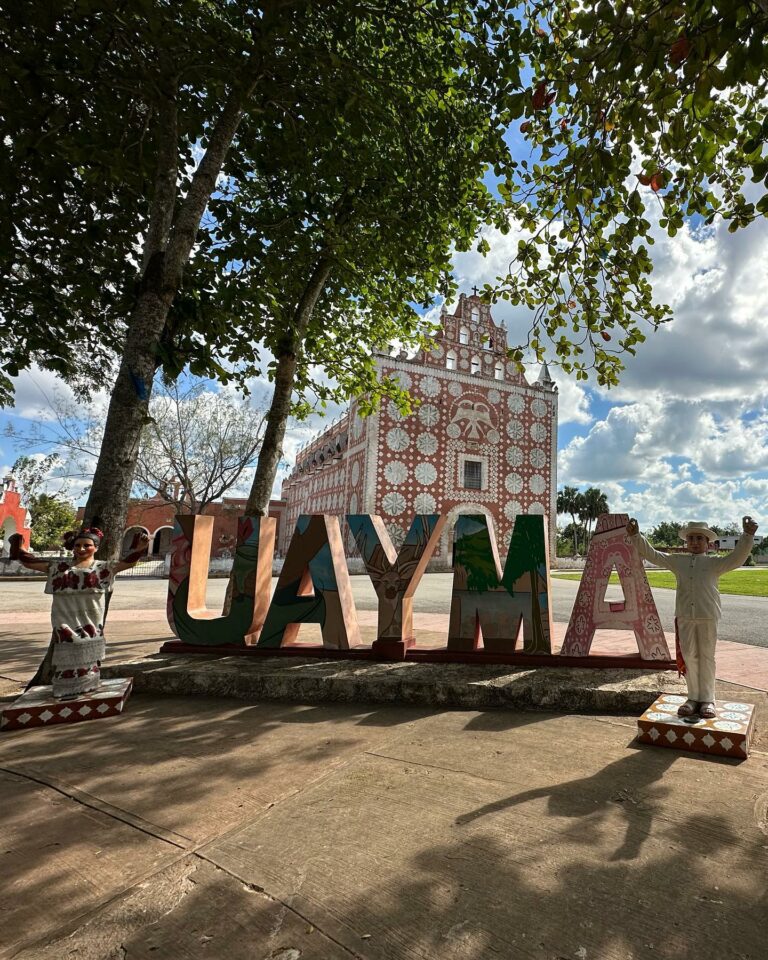
About fifteen miles outside of Valladolid sits the quiet town of Uayma. It is a tiny little town that used to be part of El Camino Real between Valladolid and Merida. It is famous for its’ convent church.
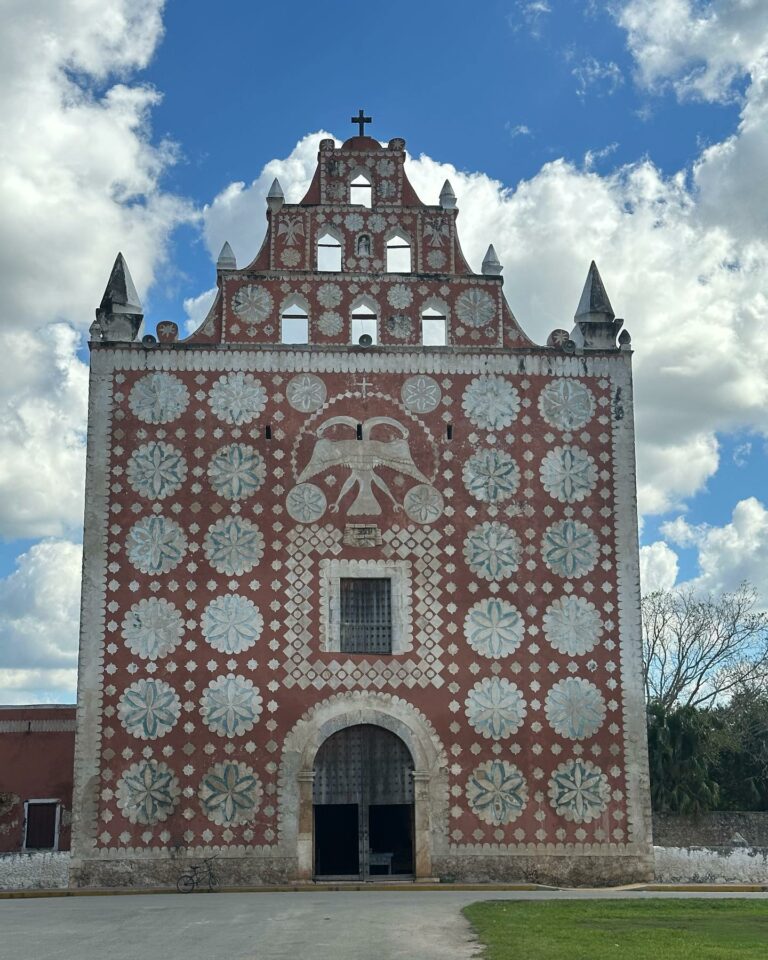
THE FIRST RECORD OF THIS site being used by the Spanish dates back to 1579, when it served as a site for the evangelization of the indigenous Maya peoples. It’s believed that the small temple was built from stones removed from Maya buildings. The currently-standing edifications were completed in 1646. At some point, the colorful exterior was painted over and the church was converted to a Dominican convent.
The convent was burned during the 19th-century Yucatán Caste War and fell into neglect for hundreds of years. Modern renovations concluded in 2005 and revealed the temple’s original brilliant decorations. Blue stars represent the original worship of Mary, red represents the blood of Christ, and a double-headed eagle represents the Hapsburgs rulers of Spain. The architectural term for these decorations is “ajaracas” and they are a common element of Spanish Colonial architecture in Central Mexico. They can be found in both the external and internal walls of the church.
Looking closely at the church’s facade, you can see embedded stones that feature typical Mayan pattern carvings under the two-headed eagle, proof of the origin of its construction materials.
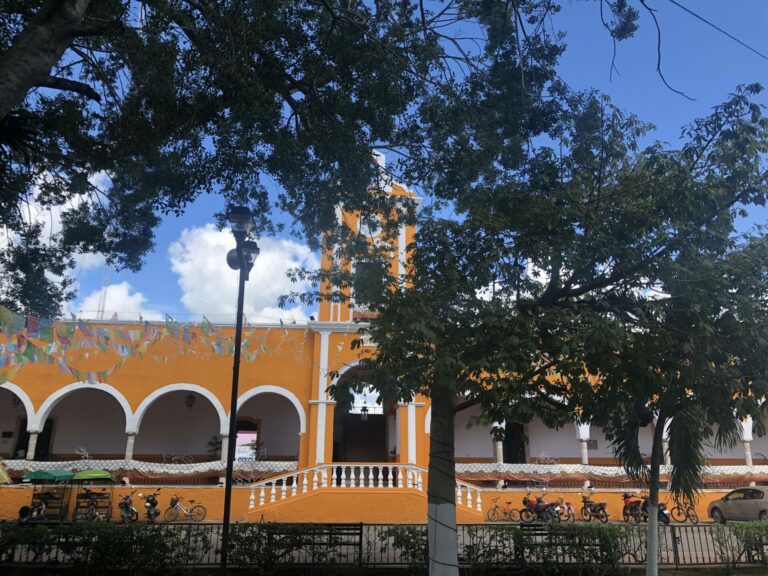
After Uayma we spent the next hour driving mostly through the jungle until we reached the small town of Espita. It is the fourth biggest city in Yucatan with a mere 11,000 people. It has a really lovely central square with a cathedral and this, the old train station.
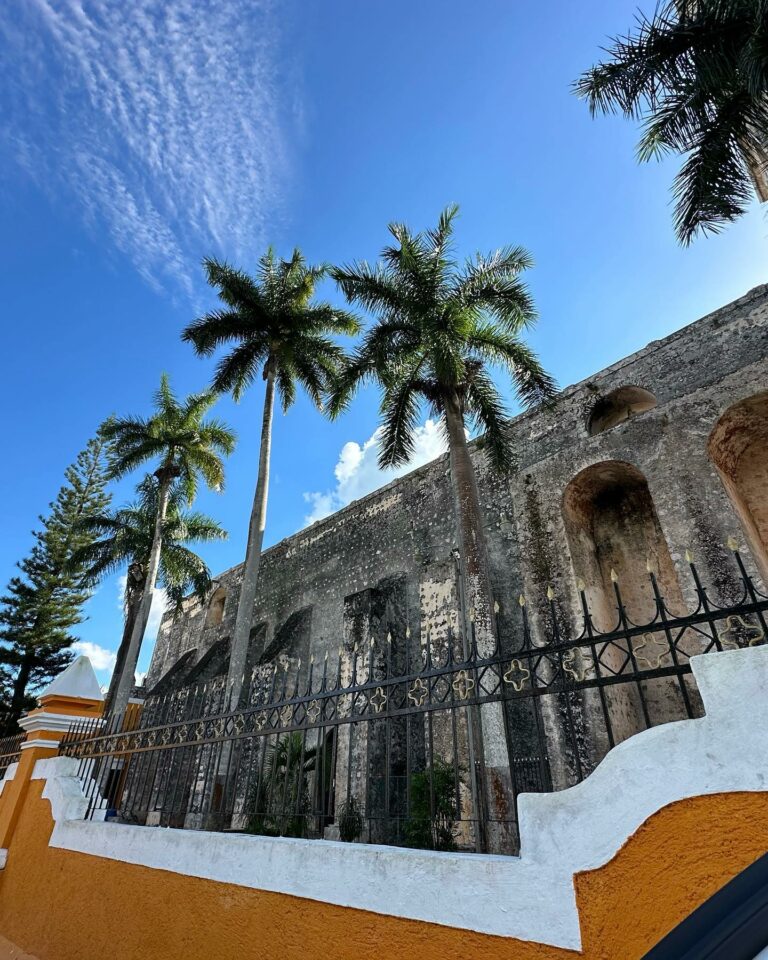
After a really superb lunch at Casa Kacaya, where we absolutely fell in love with Sopa De Lima, a staple of Mayan cuisine, we wandered around Espita a bit and marveled at the architecture and color.
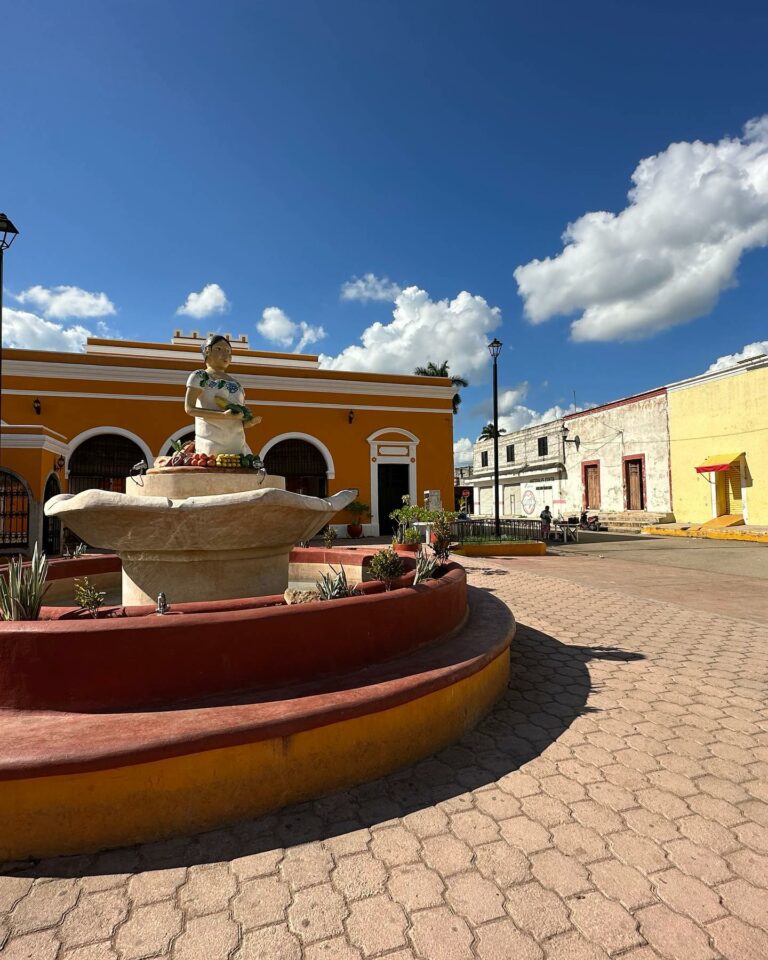
Another neat fountain!
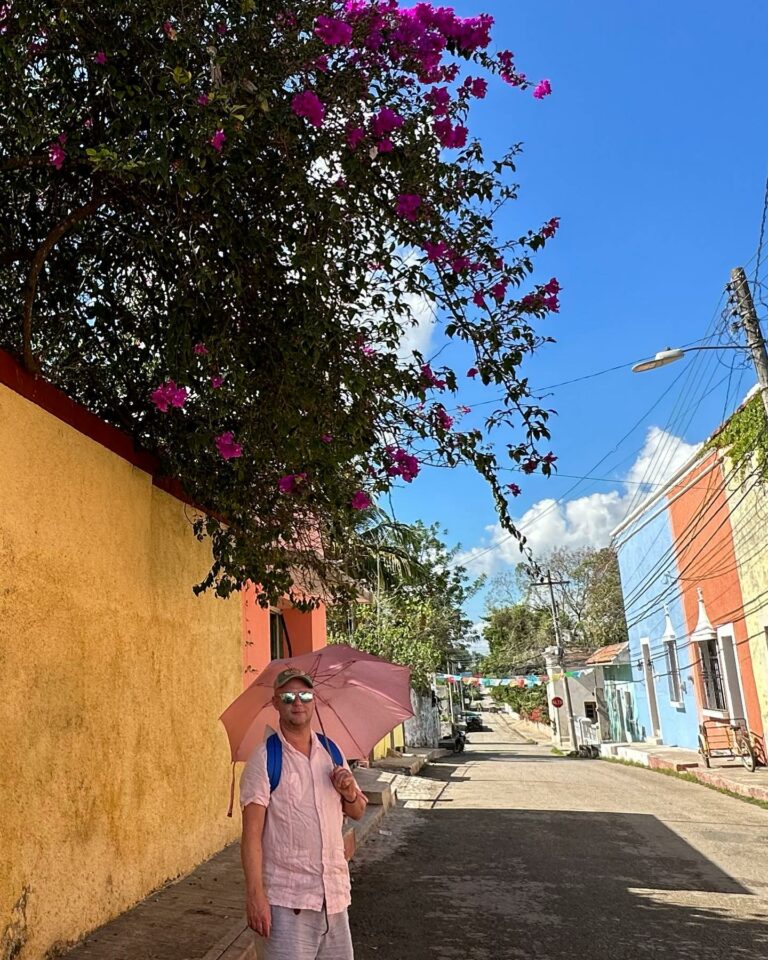
Espita was lovely but at mid-day it was real hot. I was very glad to have some linen clothes and my pink parasol. I basically lived in nothing but linens for our entire trip. I learned in our trip to Vietnam/Cambodia that nothing beats linen for extreme heat and humidity. After Espita we continued on another two hours of driving to the Capital of Yucatan, Merida. With a population over a million and lots of crazy streets and driving it was a bit of a wake up, and so very different than the jungle roads, tiny towns and Valladolid.

eclare
I love the blue skies with the white puffy clouds, such pretty photos, thanks!
raven
Sweet
JPL
Lovely pictures.
JeanneT
I’m heading down a rabbit hole of recipes for Sopa de Lima
Torrey
Enjoying both the wonderful pictures and the history lesson.
pieceofpeace
Now I want to visit this part of Mexico, thank you….
Yutsano
@JeanneT: I’m falling down the same rabbit hole. But I’m finding a lot of American recipes that just use chicken breast (bland!) and not a whole chicken for the stock or even worse canned stock! It looks absolutely wonderful however.
UncleEbeneezer
I forgot to mention, it was in Espita that a group of schoolchildren walked by, pointed at us, called us “Gringos!” and laughed. It was pretty cute and gave us a good laugh.
UncleEbeneezer
@Yutsano: Looking at a picture of Sopa De Lima we had in Merida (there will be a post of food pix later) and it looks like it was breast meat. Thinking about the first try in Espita and I think it also had breast meat. Didn’t bother me as I love breast meat and the broth still had plenty of flavor. Not sure if white meat is tradition in the Yucatan but it was common enough that we had it twice.
UncleEbeneezer
@Torrey: Thanks. Glad you like them. Most of the history I’m just learning now while I write the posts.
UncleEbeneezer
@pieceofpeace: Espita has embraced tourism a bit and has a couple fancy B&B/Restaurants and the nice city center. It would be a lovely place to stay for several days. Uayma didn’t look like it had anywhere to stay or much to do. And Uayma was so tiny that even if we found somewhere to stay, we would’ve felt like intruders on the locals. That will probably change though when the train line gets completed as I believe there will be a stop at Uayma so I anticipate it will grow and eventually become more of a tourist destination. Especially as it is so close to Valladolid and not too far from Chichen Itza.
UncleEbeneezer
@Yutsano: Kelly just reminded me that Sopa De Lima is actually made with turkey meat. My mistake!
BigJimSlade
Linens, huh? I was assuming that all the modern polyester, sweat-wicking, workout wear would be the best bet, but linens sound promising!
StringOnAStick
Thanks for the tour!
AJ of the Mustard Search and Rescue Team
Gorgeous pictures, esp Santo Domingo de Guzman Church and Convent in Uamaya. Amazing
Ty for sharing.
UncleEbeneezer
@BigJimSlade: Well yes. I’m a huge fan of those workout shirts, as a tennis coach spending many hours in the sun. But linens are much more stylish and comfy for regular everyday life activities or a night out on the town etc.